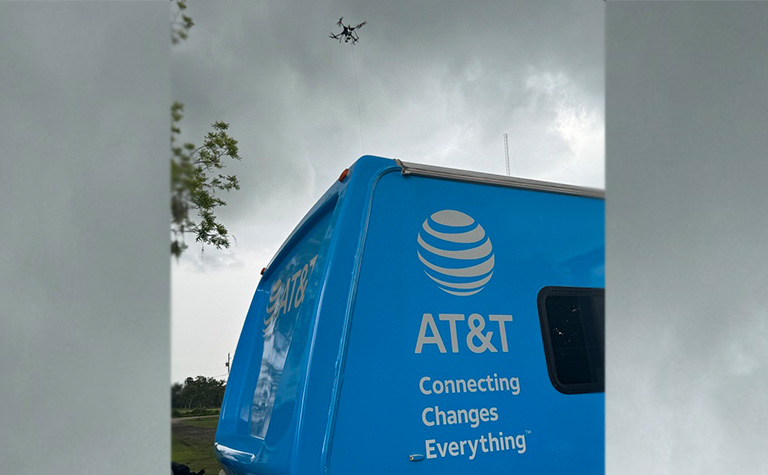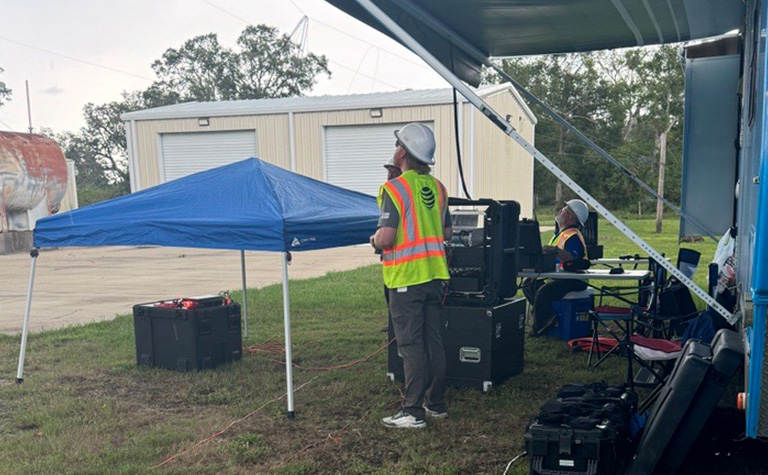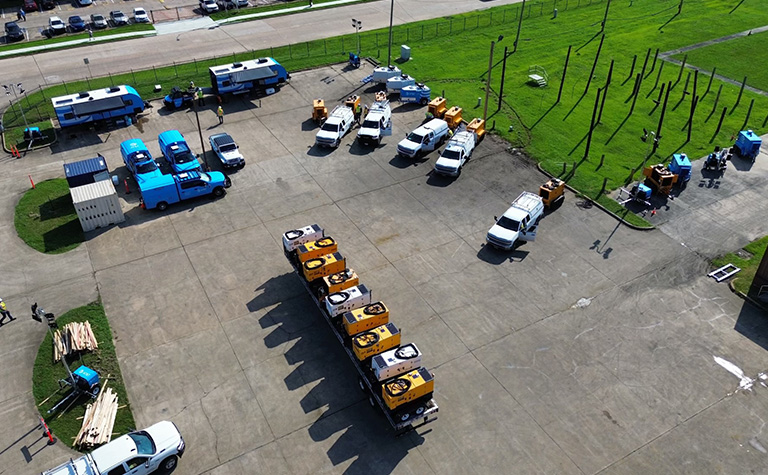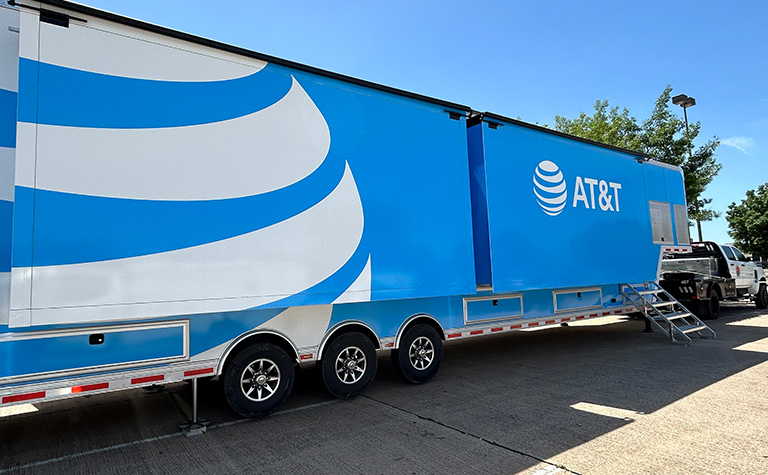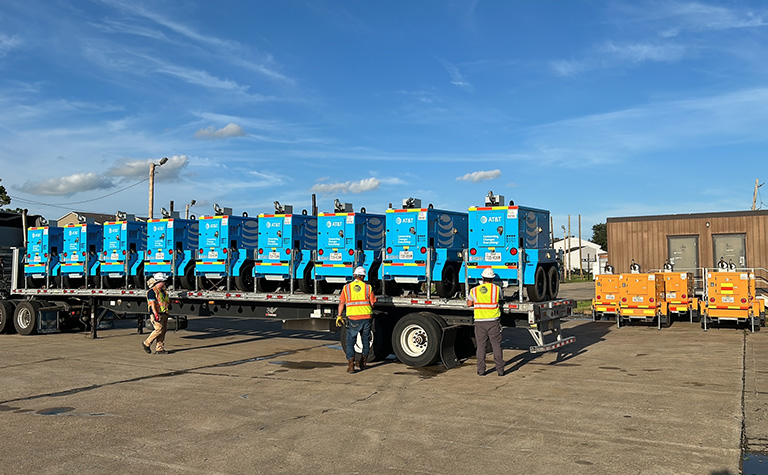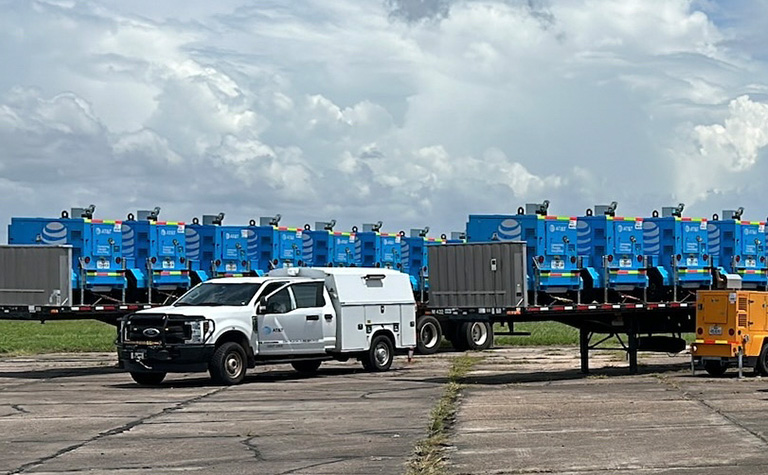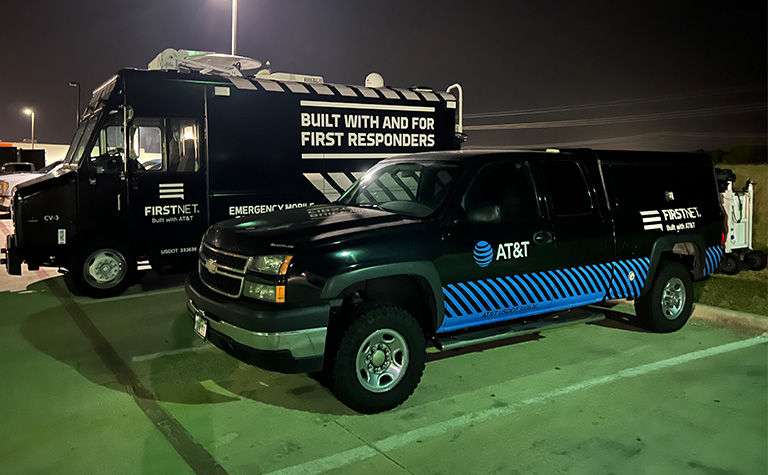July 13, 2024, 1:05 p.m. CT
As of this morning, our wireless network in Texas is operating at more than 98% of normal. We’ve made significant progress with our restoration efforts and continue to see improvements as commercial power is restored. Our crews continue to monitor locations on generators and refuel as needed.
Customers may still experience home phone and internet service issues until power is restored and all repairs are completed. For additional information please visit att.com/outages.
As a reminder to our wireless customers in affected areas, we’re waiving talk, text and data overage charges. This includes AT&T Postpaid & Prepaid customers with billing addresses in 196 zip codes from July 8, 2024 through July 17, 2024.
July 11, 2024, 5:15 p.m. CT
We continue to make progress with our recovery and restoration efforts in areas impacted by Hurricane Beryl. Currently, our wireless network in Texas is operating at more than 92 percent of its normal capacity. Our dedicated teams are working to fully restore service and are deploying additional network assets, as needed. This includes the deployment and refueling of generators until commercial power is restored.
Customers in affected areas may still experience home phone and internet service interruptions due to storm damage and commercial power outages. Although equipment that serves an area can be powered and online, we may not be aware of specific in-home service impacts until customers return to their homes and commercial power is restored. Additionally, commercial power outages can continue to affect service for our customers even after our repairs are made. To sign up for one-time service restoration texts, wireline customers can visit att.com/outages.
We understand how important it is to stay connected and will continue to provide updates as our recovery work continues.

